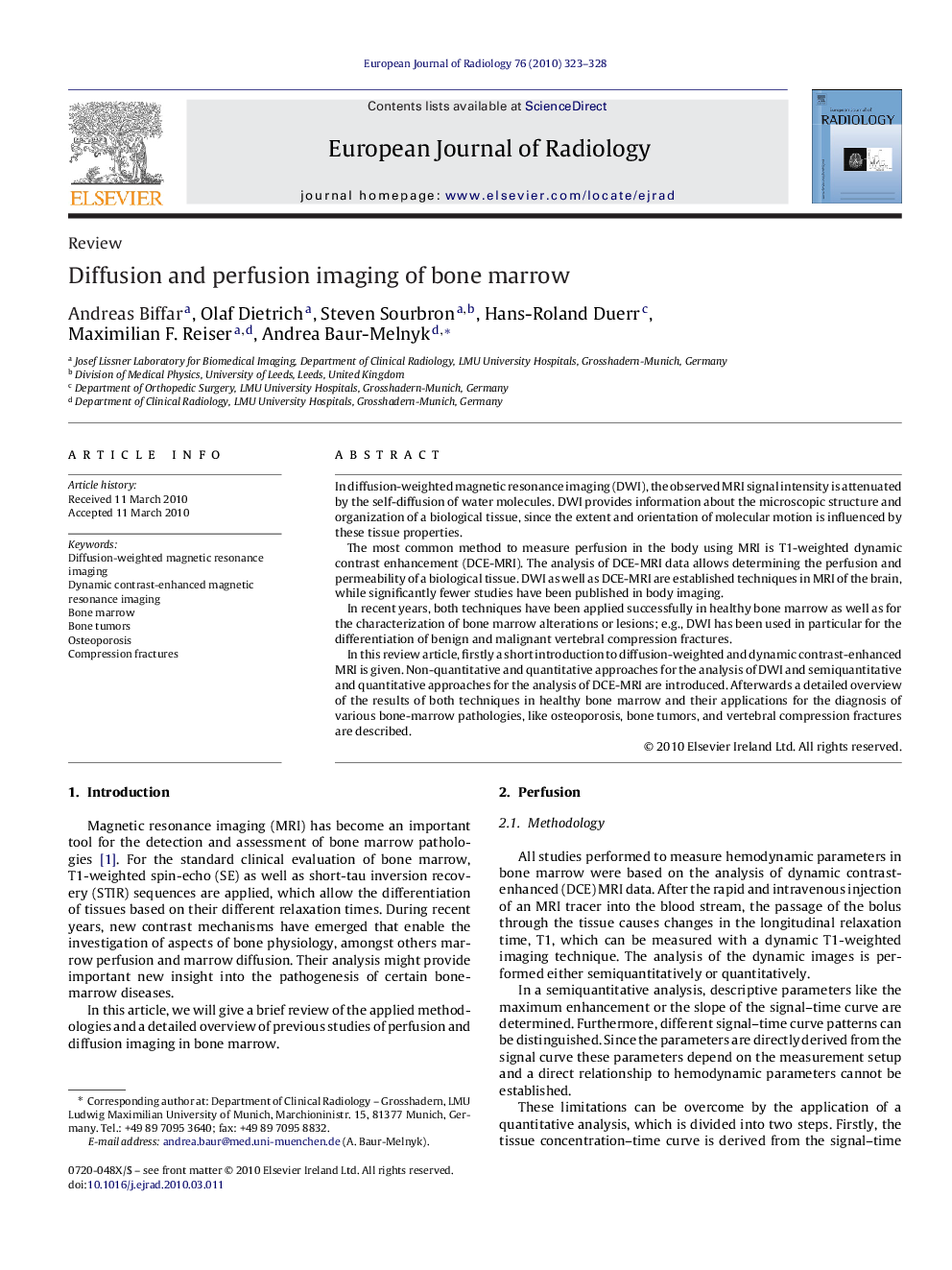| Article ID | Journal | Published Year | Pages | File Type |
|---|---|---|---|---|
| 4227013 | European Journal of Radiology | 2010 | 6 Pages |
In diffusion-weighted magnetic resonance imaging (DWI), the observed MRI signal intensity is attenuated by the self-diffusion of water molecules. DWI provides information about the microscopic structure and organization of a biological tissue, since the extent and orientation of molecular motion is influenced by these tissue properties.The most common method to measure perfusion in the body using MRI is T1-weighted dynamic contrast enhancement (DCE-MRI). The analysis of DCE-MRI data allows determining the perfusion and permeability of a biological tissue. DWI as well as DCE-MRI are established techniques in MRI of the brain, while significantly fewer studies have been published in body imaging.In recent years, both techniques have been applied successfully in healthy bone marrow as well as for the characterization of bone marrow alterations or lesions; e.g., DWI has been used in particular for the differentiation of benign and malignant vertebral compression fractures.In this review article, firstly a short introduction to diffusion-weighted and dynamic contrast-enhanced MRI is given. Non-quantitative and quantitative approaches for the analysis of DWI and semiquantitative and quantitative approaches for the analysis of DCE-MRI are introduced. Afterwards a detailed overview of the results of both techniques in healthy bone marrow and their applications for the diagnosis of various bone-marrow pathologies, like osteoporosis, bone tumors, and vertebral compression fractures are described.
